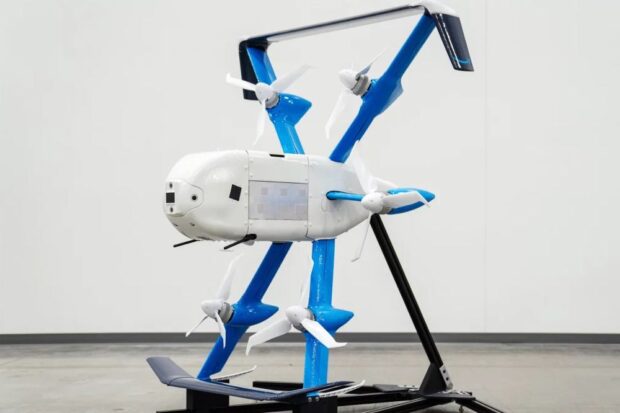Amazon plans to start flying delivery drones in Arizona this year — but don’t count on them to bring you a refreshing drink on a hot day. The hexacopter can’t operate when temperatures top 104 degrees Fahrenheit, or 40 degrees Celsius, the company says, and average daily highs exceed that for three months of the year in Tolleson, the city outside Phoenix where Amazon is preparing to offer aerial deliveries from inside a 7.5-mile radius.
The drones can’t help with midnight snacks either, because they’ll be grounded after sunset. Potentially being inoperable for a quarter of the year might make launching drone deliveries in Tolleson and neighboring desert communities seem like an odd choice. It’s far from the first challenge faced by Amazon’s much-delayed drone project. The unit is years behind its goals of flying items to customers in under an hour on a regular basis, and a one-time target of 500 million deliveries by 2030 seems distant.
Amazon Prime Air has completed just thousands of deliveries, falling behind rivals; Alphabet subsidiary Wing has notched hundreds of thousands of delivery flights and Walmart more than 20,000.
In the California wine country town of Lockeford, where Amazon initially launched drone deliveries, some residents told WIRED last year that they ordered only because Amazon lured them with gift cards. In Arizona, it could be discouraging not being able to rely on drones during those hours when one might not want to venture too far from the comfort of air conditioning. […] That temperature and other environmental conditions could ground or hamper the drone industry has been known for years.
A team from University of Calgary’s geography department estimated that on average across the world, drones with limitations similar to Amazon’s, including from weather and daylight, would be limited to flying about 2 hours a day. In the world’s 100 most populous cities, the average daily flight time would be 6 hours.
“Weather is an important and poorly resolved factor that may affect ambitions to expand drone operations,”
they wrote in a study published in 2021. Heat, in particular, forces motors to work harder to keep drones aloft, and their batteries are only so powerful.
Source:SlashDot

